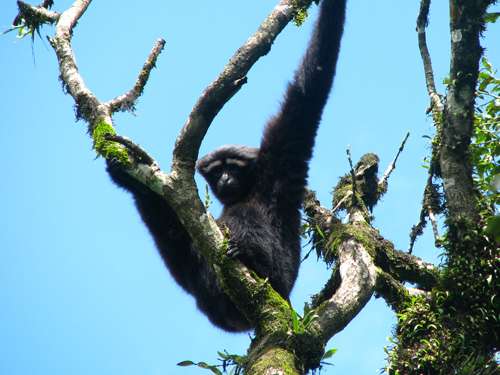Myanmar critical for hoolock gibbon conservation

A comprehensive conservation status review of hoolock gibbons in Myanmar has been published by Fauna & Fauna International (FFI), People Resources and Conservation Foundation (PRCF) and Biodiversity and Nature Conservation Association (BANCA).
The review, issued through the Gibbon Conservation Alliance, involved three years of nationwide field surveys and threat assessments. Prior to this research, conservation action was constrained by a lack of data on their distribution, population size and threats.
The results of the new research show serious threats and concludes that Myanmar is critical for the survival of both the Eastern and the Western hoolock gibbon. While Western hoolock gibbon populations in India and Bangladesh are severely fragmented, and even more so the Eastern hoolock gibbon populations in China. With 99.9% of Eastern and at least 90% of the Western hoolock total population, Myanmar offers the best chance of survival for both species.
To protect at least one important site for the conservation of each species, FFI, PRCF and BANCA have initiated a community based Western Hoolock Gibbon Project in Pauk Sa Mountain, Rhakine Yoma Range and a collaborative conservation project at Indawgyi Wildlife Sanctuary, in partnership with the Myanmar Ministry of Environmental Conservation and Forestry. At both sides we have been able to reduce habitat fragmentation and hunting through active engagement of local communities in the protection of gibbons and by providing support for alternative livelihoods.

FFI, PRCF and BANCA gratefully acknowledge the financial support from Arcus Foundation and the United States Fish and Wildlife Service.
More information: Read the full report:
Provided by Fauna & Flora International




















